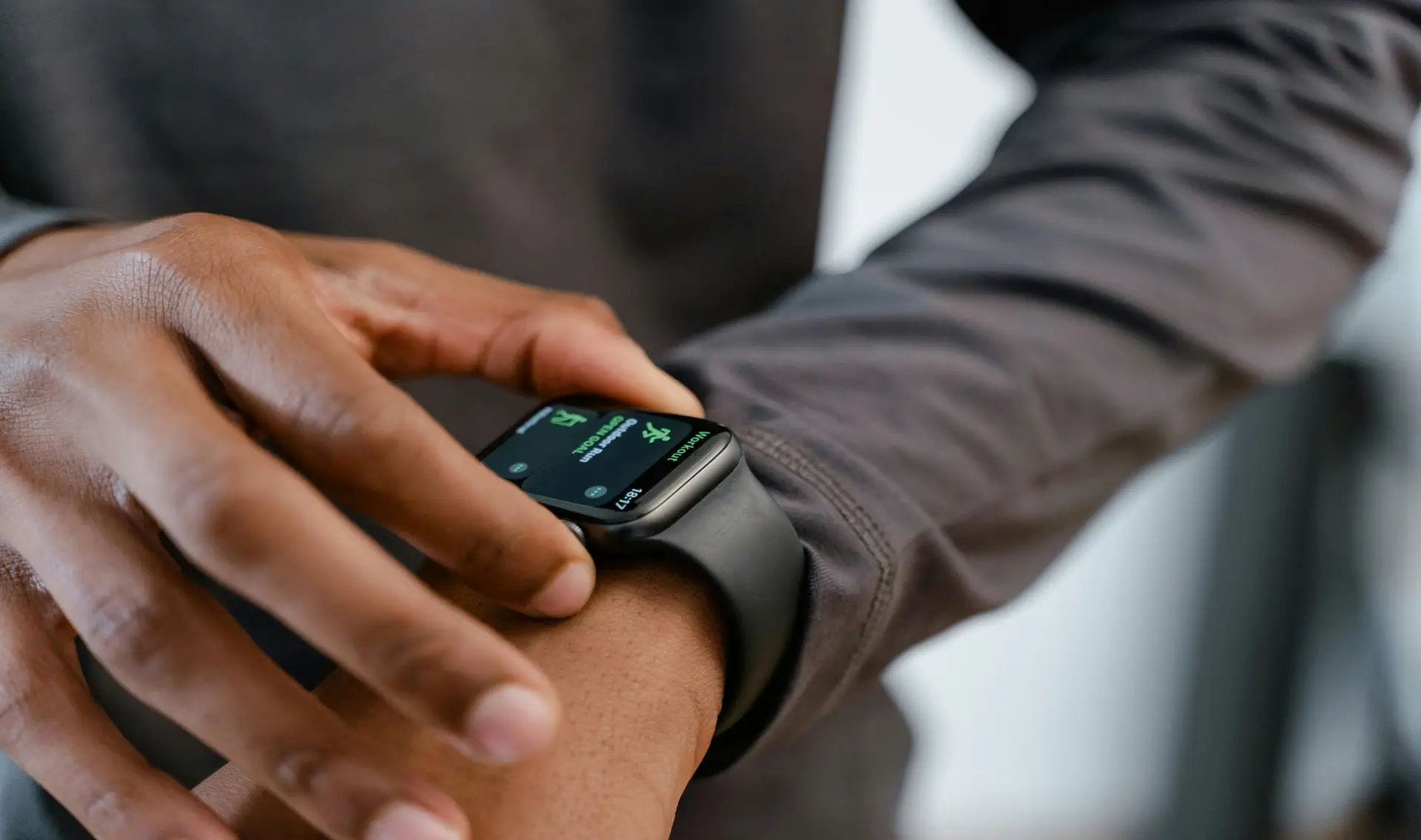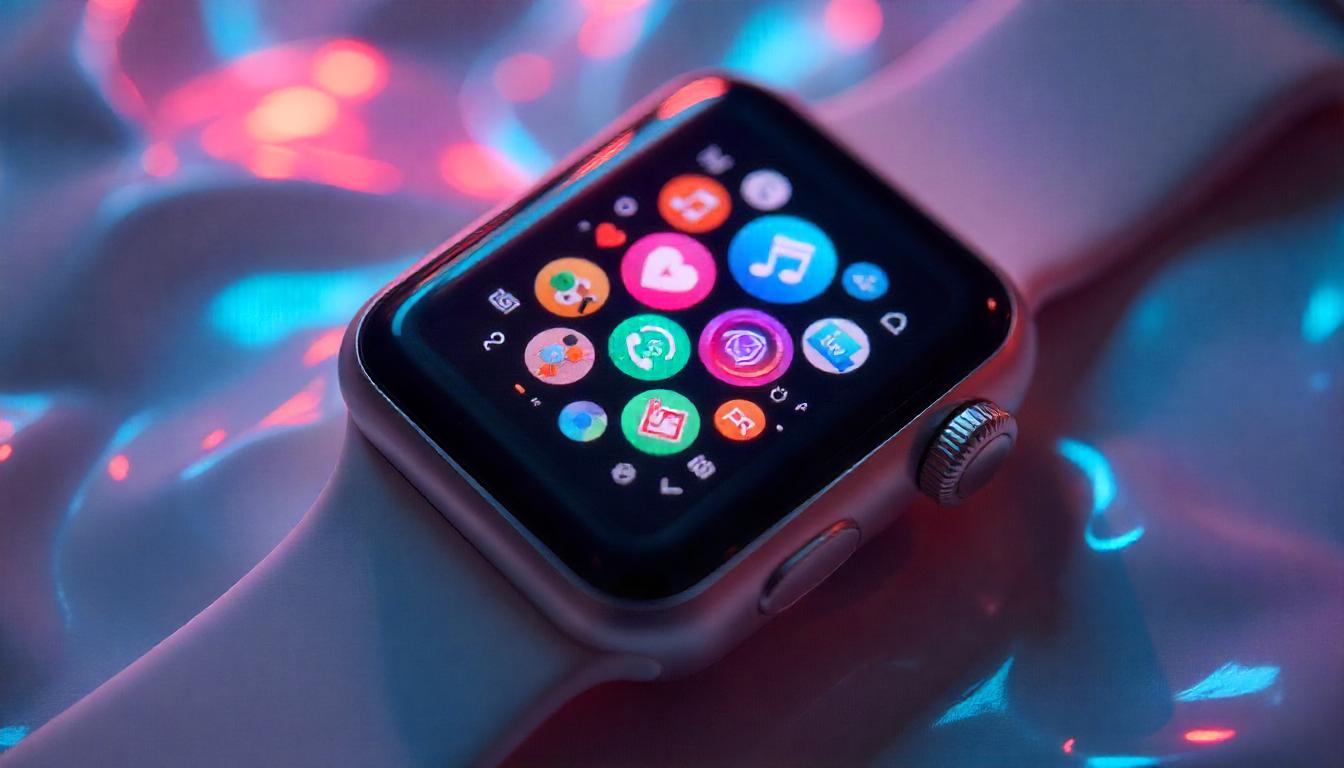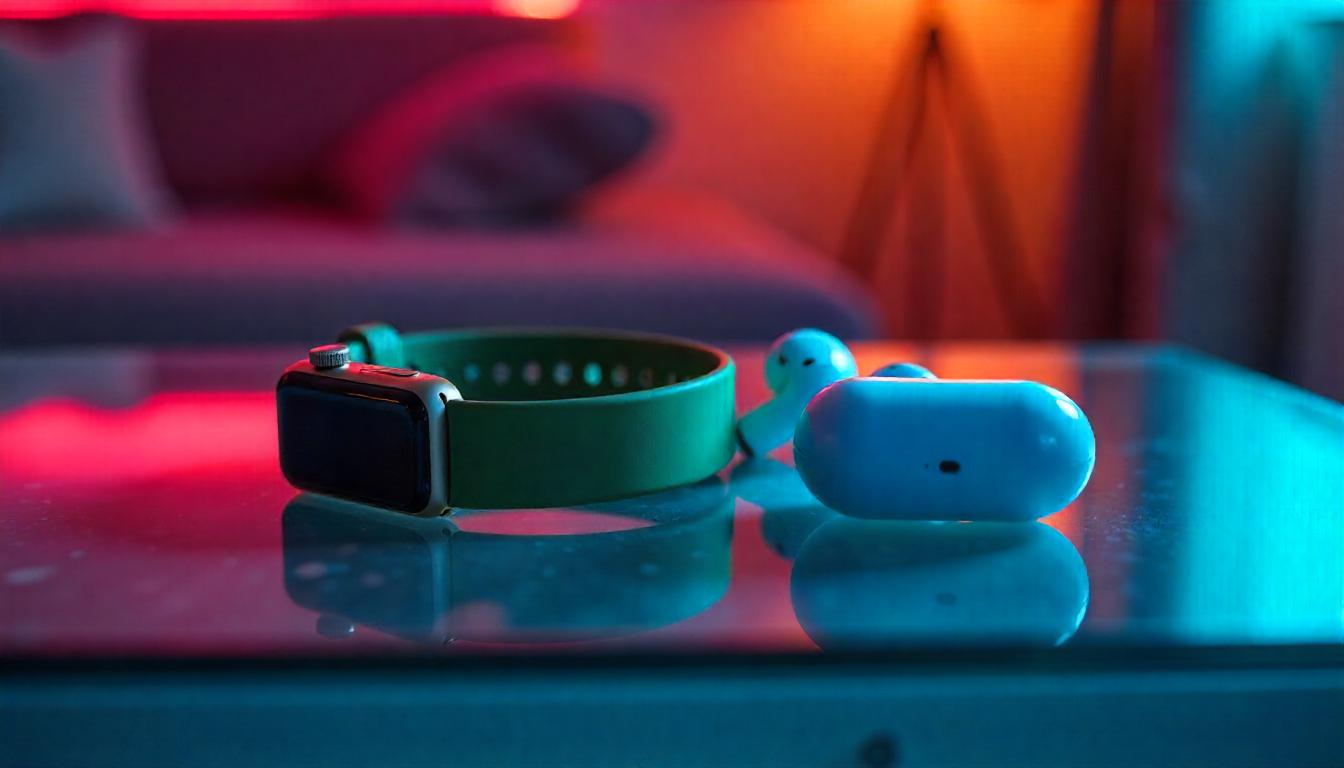Monitoring sleep is already one of the most popular features of smartwatches nowadays. Tracking your off hours is a key metric in newer smartwatches
Nevertheless, it is paramount to know how your smartwatch’s sleep monitoring might be impacting the quality of your sleep.
In this article, we will explore how wearable technology has evolved into the sleep-monitoring smartwatches we know and love today.
But first, let’s take a closer look into the stages of sleep and why sleep is important to the body.
The Importance of Quality Sleep
Before we begin, Here are a few notes on sleep.
Sleep is vital for overall health and well-being. It allows the body to repair itself, strengthens the immune system, and consolidates memories.
Adequate sleep improves concentration, mood, and decision-making, while lack of sleep can lead to a range of issues, including weakened immunity.
Sleep has phases
When it comes to getting a good night’s sleep most of us usually think about the total duration of rest we are getting, although it is a good practice to know the time you spent asleep, it isn’t everything when it comes to a full sleep foundation.
Each night you fall asleep your body goes through 2 phases/stages in cycles. NREM (Non-Rapid Eye Movement) and REM (Rapid Eye Movement).
NREM Sleep:
- Stage 1: Light sleep, where you drift in and out of sleep. This stage lasts a few minutes.
- Stage 2: Slightly deeper sleep, with a slower heart rate and decreased body temperature. This stage makes up about 50% of your sleep.
- Stage 3: Deep sleep, also known as slow-wave sleep. This stage is crucial for physical recovery and immune system function.
REM Sleep:
- This is the stage where most dreaming occurs. The brain is active, but the body is relaxed. REM sleep is important for cognitive functions like memory and learning.
These stages cycle throughout the night, with each complete cycle lasting about 90 minutes.
The circadian rhythm
The circadian rhythm is the internal clock of our body; it regulates the sleep-wake cycle and repeats almost every 24 hours.
This rhythmic process is influenced by environmental cues, particularly light and darkness, which signal to your brain when it’s time to wake up or go to sleep. The circadian rhythm affects not only sleep patterns but also various bodily functions, including hormone release, body temperature, and digestion.
Tracking your circadian rhythm from wearables such as your smartwatch might be a possibility in the near future.
a Hamilton College professor of mathematics and statistics Clark Bowman was quoted saying this:
“Smartwatches collect heart rate data using optical sensors, which aren’t very accurate, and there are so many things affecting heart rate throughout the day that measurements tend to be all over the place, so it’s a big result to be able to identify a circadian rhythm in that kind of data at all.”
However, looking into the data and studies done; the consensus is that there is so much interference to the data that it is unlikely smartwatches can retrieve the circadian rhythm and sleep stages from heart rate alone.
Ideal heart & respiratory rate
The ideal sleep heart rate varies depending on age, fitness level, and individual health, still for most adults, a typical resting heart rate during sleep is between 40 to 60 beats per minute (BPM) while the ideal sleep respiratory rate for most adults is between 12 to 20 breaths per minute.
Athletes or those in excellent physical condition may experience even lower heart rates, sometimes dipping into the 30s. During sleep, the heart rate naturally slows down as the body enters a state of rest and recovery.
A consistently high sleep heart rate might indicate stress, poor sleep quality, or an underlying health issue, while a lower rate generally reflects good cardiovascular health and relaxation.
The Role of Actigraphy in Sleep Measurement
“Actigraphy” is the measurement of movement through accelerometers to determine sleep parameters using an “Actigraph” device.
Similar to a Fitbit, an actigraph is a wrist-worn device that tracks your movements during sleep. Software then translates those movements into sleep data to determine awake and sleep times.
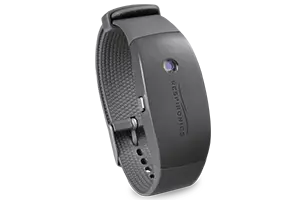
An Actigraph device can be worn 24/7 and at home to track your sleepiness throughout the day; they are a convenient way to track your sleep without having to sleep in a lab.
Also, most actigraphs resemble a normal watch.
Fun Fact: Actighraphs due to their convenience, are sometimes used to track astronaut sleep times rather than doing a complete laboratory PSG.
What smartwatch actigraphy measures
Most entry-level smartwatches use actigraphy to determine how much time you were asleep, and of course, movement alone isn’t a reliable factor to calculate the duration of sleep. Just ask someone who lays awake at night.
To get a sense of how this works — when you first set your Fitbit watch to “sleep mode” the accelerometer reads your movements throughout the night, and when you sync your watch the next morning the software translates those movements into sleep data.
You can also edit the movement data — data recorded during your “awake” time gets re-analyzed when you tell the software you were actually asleep then, and see it charted as sleep data.
Some Higher-End smartwatches employ actigraphy, heart rate, and noise tracking to achieve a higher degree of accuracy and help differentiate awake time from sleep time.
Tracking Your Sleep
Activating the process:
To activate sleep tracking on a Fitbit or a similar watch, follow these steps:
- Wear your Fitbit: Make sure you’re wearing your Fitbit snugly on your wrist before you go to bed.
- Auto-tracking: You can either toggle “Sleep Mode” from settings or let your Fibit automatically engage sleep mode, so that you don’t need to manually activate it. Just go to sleep, and the device will detect when you fall asleep and wake up.
- Check sleep settings: Open the Fitbit app on your smartphone. Tap on your profile picture, select your device, and then go to “Sleep.” Ensure that sleep tracking is enabled.
- Review data: In the morning, open the Fitbit app on your smartphone to review your sleep data, including the amount of sleep and time spent in different sleep stages.
Your Fitbit should now automatically track your sleep every night.
How Your Smartwatch Monitors Sleep
As of now, three methods are used in smartwatch sleep analysis.
These technologies might be used in a separate or a combined process to further enhance the accuracy of sleep tracking in your smartwatch.
Heart rate tracking
Most smartwatches that feature heart rate tracking use optical sensors in a process called photoplethysmography (PPG).
Although there are other methods used in wearable heartbeat tracking, optical sensors are used the most.
Heart rate tracking allows your smartwatch to notice heartbeat variations which it then uses to differentiate which sleep phase you are in.
This feature is also used in other activities as well, for example, the Samsung Galaxy Watch tracks your heart rate during exercises and every 10 minutes when you are still.
Acceleration tracking
Actgraphy is frequently used in movement detection in most of today’s smartwatches.
The built-in accelerometer in your smartwatch monitors your movements during the night. Periods of little to no movement are interpreted as sleep, while more active movements may indicate wakefulness or lighter sleep stages.
According to Fitbit, their devices incorporate a 3-axis accelerometer to determine acceleration and orientation.
Noise tracking
Some Higher-End smartwatches track noise during sleep using built-in microphones. These devices listen for ambient sounds while you sleep, such as snoring, talking, or external noises like traffic.
The microphone captures these sounds, and the smartwatch analyzes them to provide insights into your sleep environment.
This feature can help identify disruptions that may affect your sleep quality, such as loud noises or sleep-related breathing issues like snoring.
In the morning, you can review the noise levels and sound events in the smartwatch’s companion app, helping you better understand how your sleep might be impacted by your environment.
Are Such Tracking Methods Accurate Enough To Be Trusted?
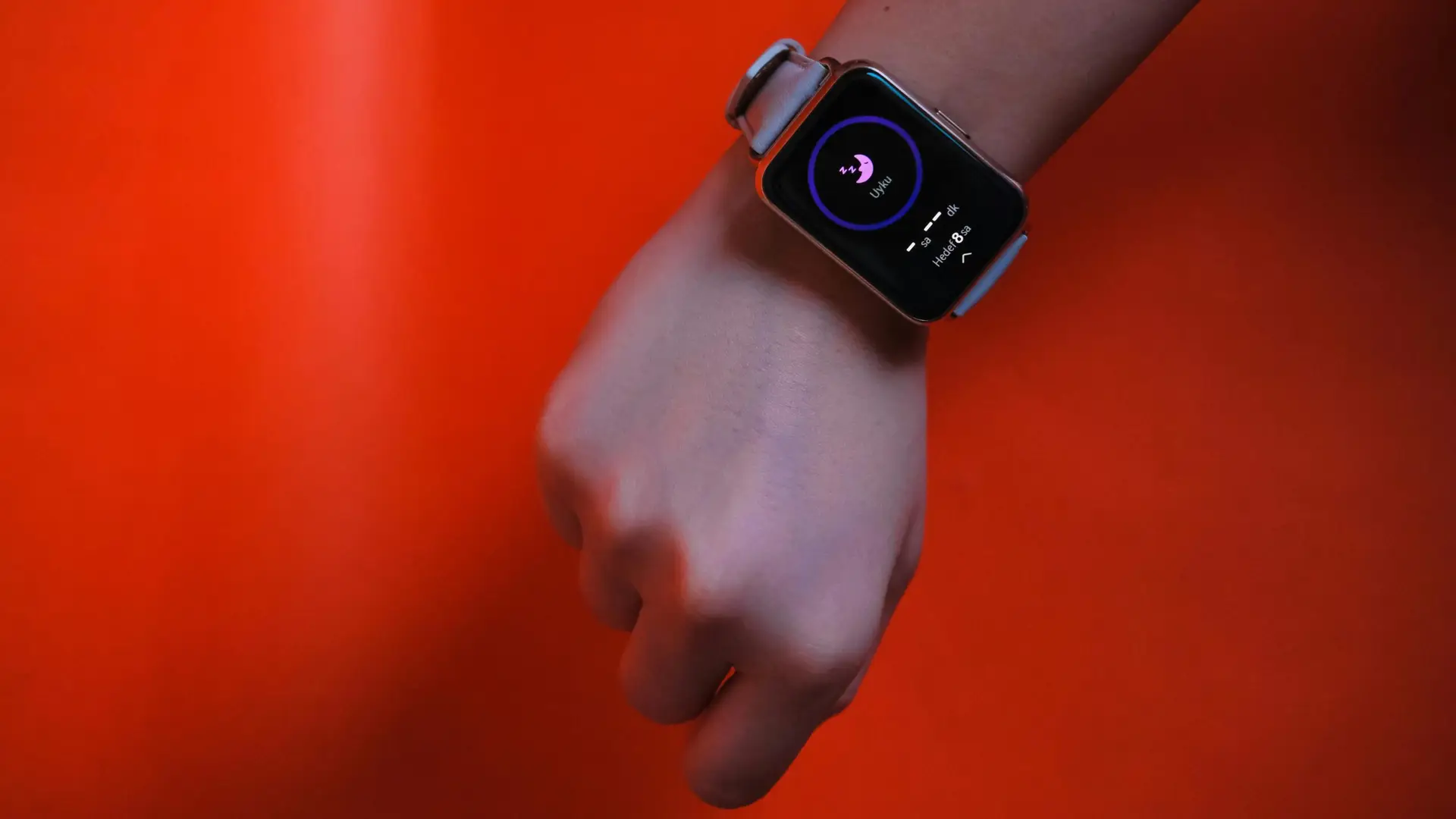
Smartwatch sleep-tracking features are generally accurate for providing an overview of your sleep patterns, but they have limitations. While they can effectively track sleep duration and give a general idea of sleep stages (light, deep, and REM), they may not be as precise as clinical sleep studies like polysomnography.
Factors such as movement, heart rate variability, and sensor placement influence the accuracy of the data.
An instrument validation study comparing medical-grade Actigraphy against the Samsung Galaxy Watch was conducted in 2020 which concluded in:
“the sleep parameters of both the Oura ring and Samsung watch have acceptable mean differences and indicate significant correlations with actigraphy.”
This means that the difference in measuring accuracy between the smartwatch and medical actigraphy was minimal.
For most users, smartwatch sleep tracking offers useful insights into sleep habits and trends, but it shouldn’t be relied upon for diagnosing sleep disorders or detailed analysis.
For serious concerns, consulting a sleep specialist is recommended.
How Laboratories Measure Sleep
Generally, sleep researchers employ polysomnography (PSG) to study periods of sleep.
Polysomnography is a comprehensive sleep study used to diagnose sleep disorders. It involves monitoring various physiological parameters while you sleep, including brain waves (EEG), eye movements (EOG), heart rate (ECG), breathing patterns, blood oxygen levels (SpO2), and muscle activity.
During a polysomnography test, you spend the night in a sleep lab or clinic, where sensors are attached to your body to collect data. This test is commonly used to diagnose conditions such as sleep apnea, narcolepsy, restless legs syndrome, and insomnia.
While tracking sleep data through your wrist device is easy & convenient, it isn’t as accurate or as thorough as an in-lab PSG diagnosis. PSG is known as the “gold standard” in sleep studies with most sleep researchers agreeing that PSG is the definitive way to measure sleep.
A 2018 review of existing research in the JMIR mHealth and uHealth journal found that people who use wearable activity trackers tended to become more active, increasing their daily step count and energy expenditure, and also mentioned that activity trackers helped users maintain good habits.
Other Health Metrics That Your Smartwatch Tracks
There are several useful smartwatch health monitoring features:
- Heart rate tracking
- Pedometer
- Blood oxygen saturation
- Blood pressure
- Body weight composition
- Total calories burned
- Workout mode for various activities
FAQs
Yes, smartwatches can detect when you fall asleep by using sensors to monitor your movement and heart rate. When the watch notices that your movement has decreased and your heart rate has slowed, it interprets this as the beginning of sleep.
While this detection is generally accurate, it might not pinpoint the exact moment you fall asleep but provides a reliable estimate for most people.
Smartwatches are reasonably accurate for tracking basic sleep patterns, such as total sleep duration and general sleep stages (light, deep, and REM sleep).
The accuracy can vary depending on the device and individual factors, such as how tightly the watch is worn.
Yes, it is generally safe to wear smartwatches while sleeping. Most smartwatches are designed with comfort and safety in mind, using materials that are skin-friendly and non-toxic.
However, some users may find wearing a watch at night uncomfortable, or it might cause minor skin irritation if worn too tightly












